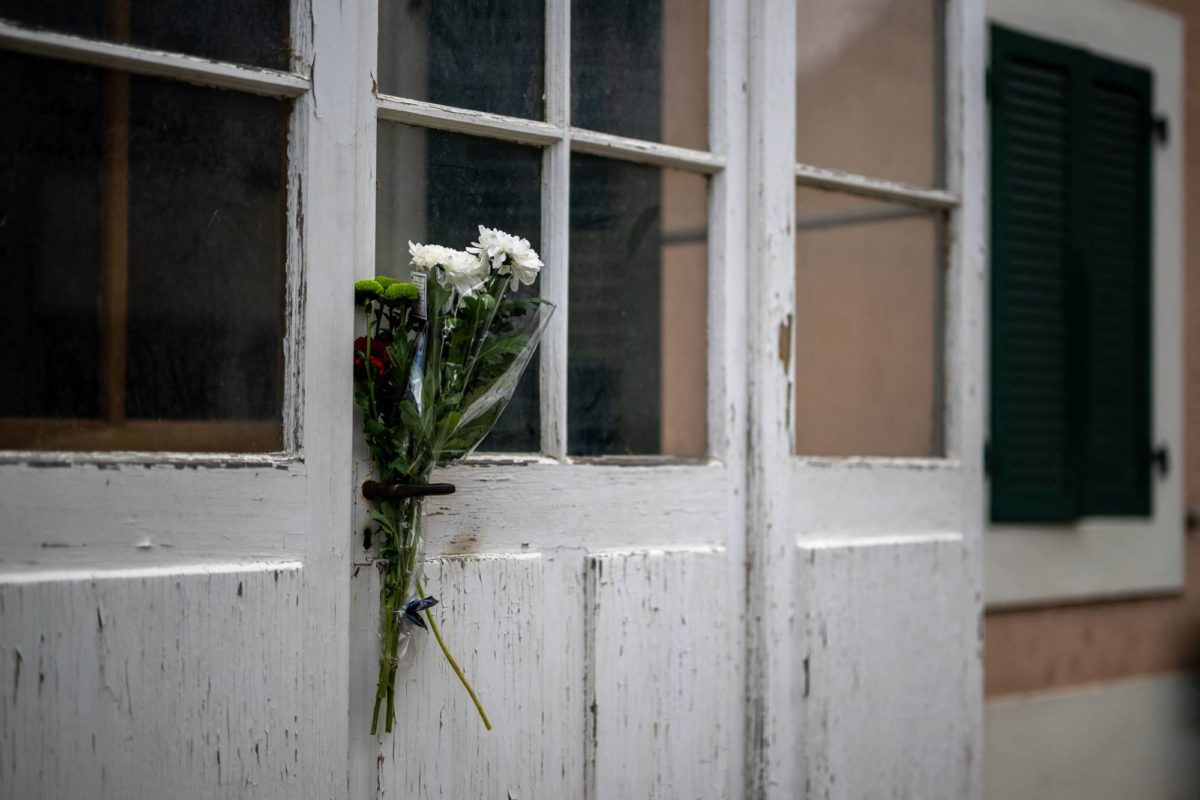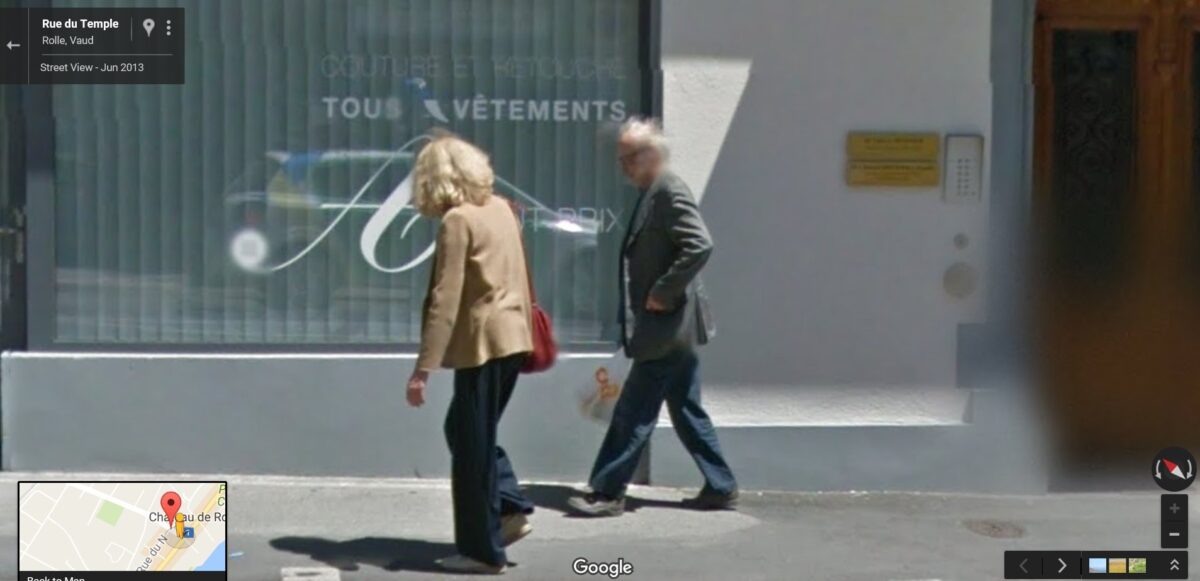The Arrival of a Train
Jean-Luc Godard’s first-ever appearance in a film, not listed on either IMDB or Letterboxd, came four years before his own directorial debut, as a cameo in René Clément’s 1950 Le Château de verre. He is a passenger, one of many in a long line of bodies on their way out of a train station. The other extras stand passively with no sign of protestation as Michèle Morgan’s heroine goes past them in the line. But a 19-year-old Godard, with his unmistakable glasses, suddenly emerges from within the crowd and follows the actress in cutting the line. Absentmindedly, Morgan passes the ticket booth, before being stopped to show her ticket. Godard emerges again, this time from the center of the Z-axis composition. He stands apart enough from the rest of the crowd (resembling the young -troubled protagonist of a Bresson film) that, with Morgan’s face away from the lens, you might mistake him for an important character. As if to further corroborate this momentary illusion, his eyes lock with the heroine for a split second. Or perhaps he’s looking beyond her, into the eye of the camera.
A few decades later, Chris Marker would make the lyrical assertion, in Sans soleil (1983), that the train assembles fragments of dreams from its passengers into a film: “the ultimate film.” And “the tickets from the automatic dispenser grant admission to the show.” Godard’s first encounter with the practice of cinema came before automatic ticket booths were invented, so he had to have his ticket checked by a person on his way out of the dream-train, and he was in such a hurry from that first moment, that he would reach around the body of the man in front of him to show his ticket. If in Marker’s analogy, being a passenger on the train is akin to being a spectator, simultaneously feeding the collective dream machine and feasting on it, Godard’s impatient movement out of the train station and toward the camera had clear connotations for the trajectory of his career. If Godard’s life in cinema began with the image of him exiting a train station, it would end with his voice and texts over images of trains taken from the history of cinema. In his final film, Le Livre d’image (2018), Godard fulfilled what Marker had spoken of decades before, but in his own way: by putting together fragments of trains, each train containing the collective dreams, stories, and histories of cinema, to create his “ultimate film.”
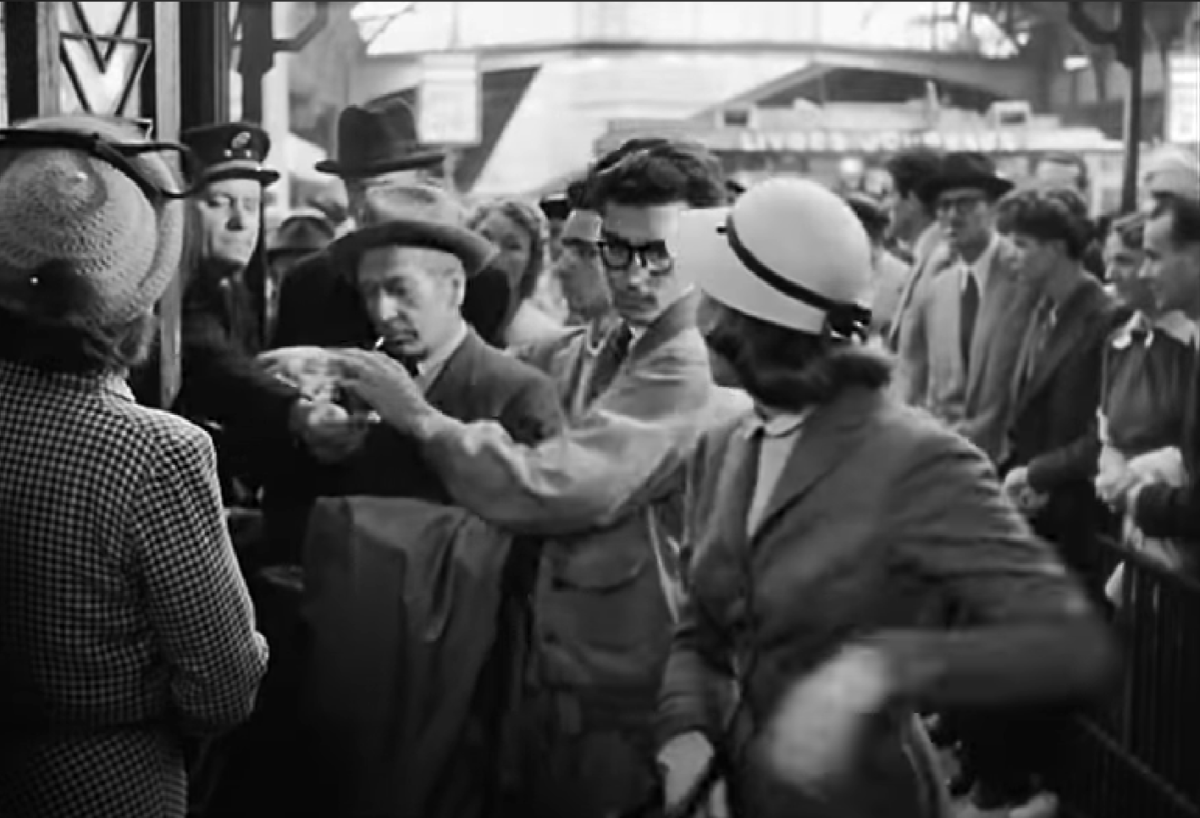
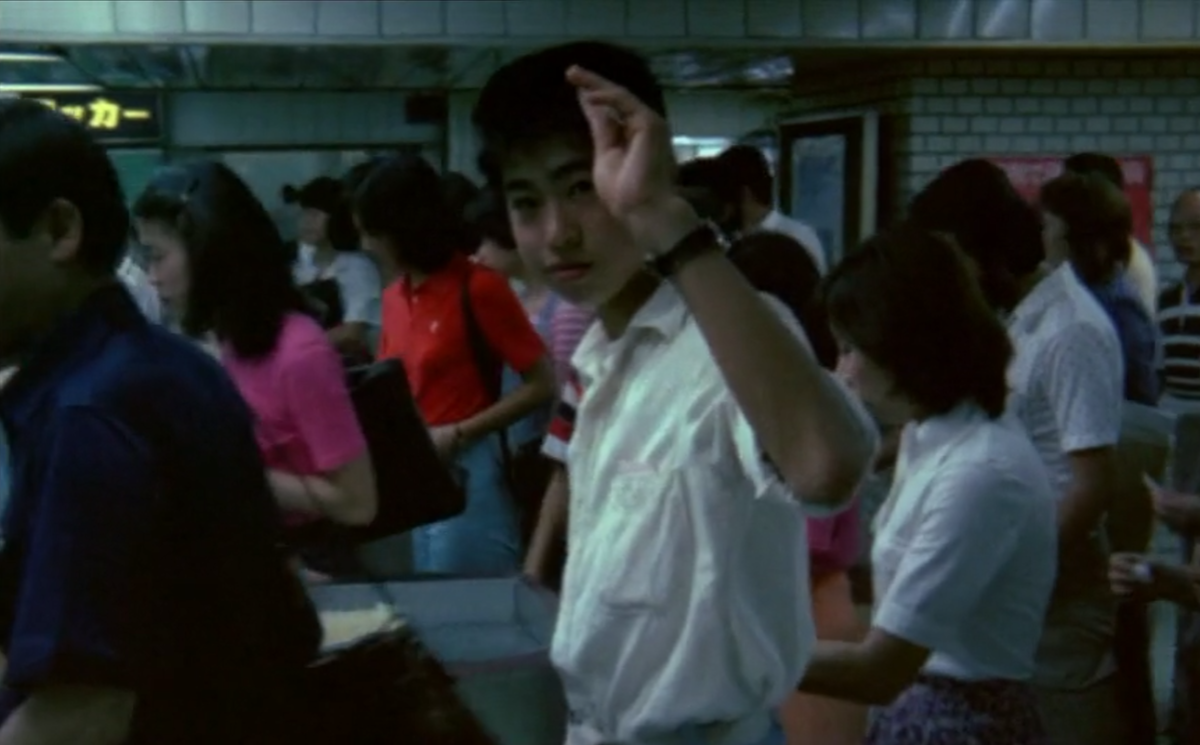
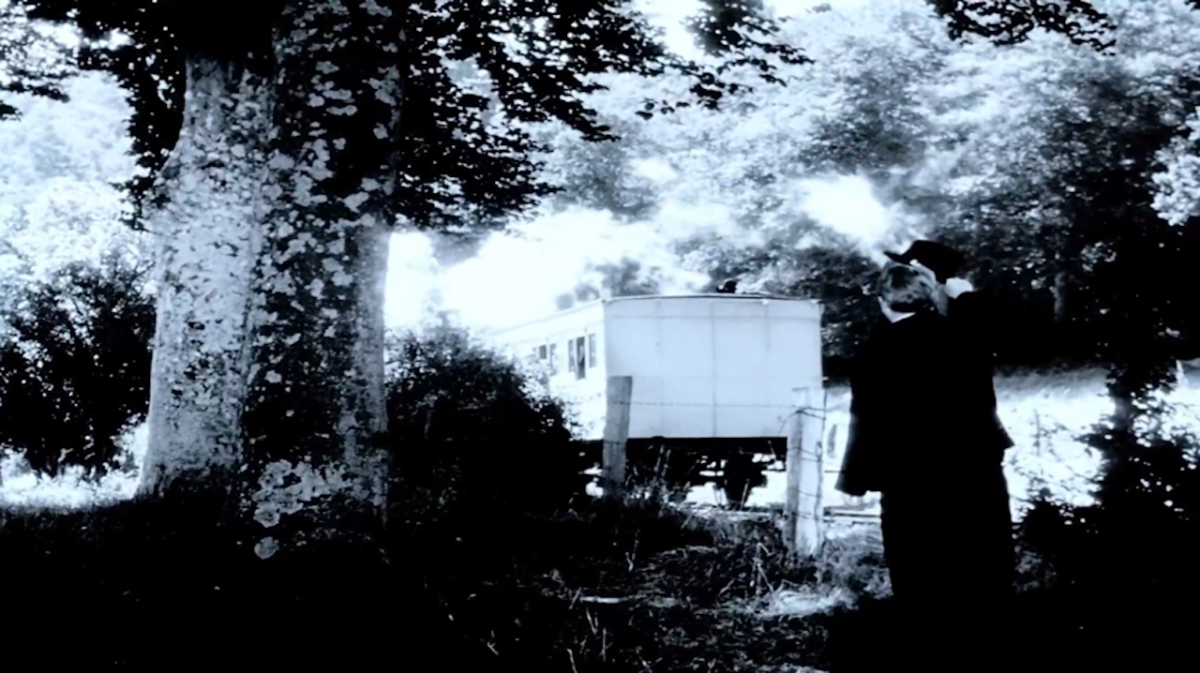
Godard as Actor, Self, Presence
Godard has 131 films credited to him as a director on both Letterboxd and IMDB. Letterboxd also lists 145 acting credits for the recently departed filmmaker, while IMDB divides (and expands) these credits into 47 as actor and an additional 128 credits as “self.” There is no explanation about the categories on the site, but we can assume the former refers to films in which Godard plays a fictional character, while the latter indicates instances where he appears as his “real” self. There is still a third category not listed on either website: films in which Godard doesn’t appear at all, yet his (lack of) presence has an effect.
Godard’s first non-cameo acting credit came a few months after Le Château de verre, in his Cahiers du cinéma colleague, Jacques Rivette’s Le Quadrille (incidentally, Rivette had also had a cameo alongside Godard in Le Château de verre). But the first performance for which Godard is widely remembered wouldn’t appear for another dozen years when he co-starred alongside Anna Karina in Agnès Varda’s Cléo de cinq à sept (1962), or more accurately, in a film within Cléo, titled Les Fiancés du pont Mac Donald. The numerous obituaries and discussions that emerged in the wake of Godard’s passing had varying degrees of attention to different aspects and periods of his extensive and complex oeuvre. Among these, were also a handful of mentions of Godard’s appearances in other films, and in this regard, no film garnered as much attention as Visages, villages, Varda’s 2017 documentary, a film in which Godard does not appear.
In the 57 years between Godard’s appearance in Cléo de cinq à sept and non-appearance in Visages, villages, his image has mutated from a charismatic arthouse celebrity to an isolated, cryptic old sage who speaks in riddles of sound and image, like Heraclitus the Dark of cinema. While the aforementioned controversy around Visages, villages developed into an online “discourse,” non-appearances are nothing new to Godard. He had already developed a habit of not showing up to festivals and talks in the 60s, sometimes sending in letters instead. In recent years, the written letter was occasionally replaced by the video letter or video appearance. Aside from Varda’s penultimate film, his presence has also been conjured in other films in which he doesn’t appear, like Luc Moullet’s Le Prestige de la mort (2007). In others yet, it’s not his person which is conjured, but his style and voice, as in the short Vent d’ouest (2018), initially attributed to Godard, which turned out to be a forgery. We can add to that list Mitra Farahani’s recent See You Friday, Robinson (2022), in which Godard does make an appearance, though on his own terms. But what are Godard’s terms of (non)appearance, or his elements of presence?
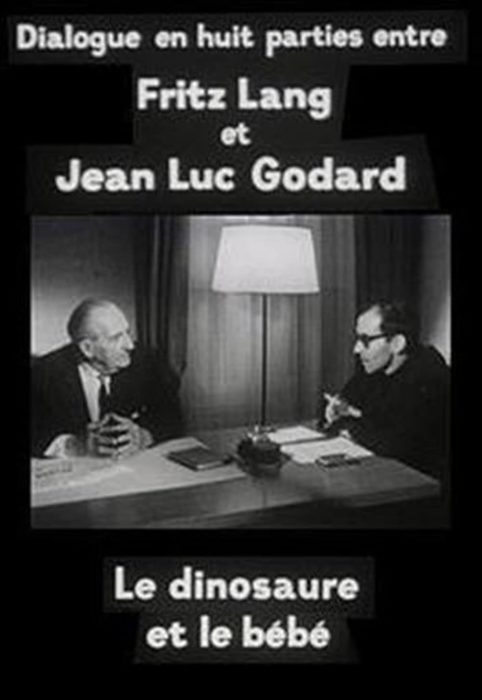
From Baby to Dinosaur: The Evolution of Godard’s Image (and the Images of Godard)
Godard emerged as a global superstar in the early 1960s, following the success of À bout de souffle (1960) and his subsequent New Wave films. His image immediately garnered an iconic significance and was widely circulated. If he had disembarked Clément’s train as a spectator still wearing clear glasses, by the time he got to the other side of the camera, he had switched to sunglasses that would hide his eyes for years to come, guarding him in the act of looking, while adding to his mystique. Then, he suddenly disappeared. “But Godard hasn’t made any films in the past ten years, has he?” is one of the “2 or 3 things” that the authors of the 1980 book Godard: Images, Sounds, Politics open with, representing one of the prevalent views on the filmmaker at the time. It’s common knowledge that Godard disappeared for many post-68. For some, he reappeared later, specifically after the release of Sauve qui peut (la vie) in 1980. For others, he never surfaced again. An example of the latter I came across recently is the celebrated film scholar, Joseph McBride, who, following Godard’s death, said he’d mostly made “pretentious twaddle” post-68. There are others yet, including a former film school classmate of mine who thought Godard was already long dead at the time of the release of Le Livre d’image in 2018 (and thus was understandably surprised to hear he had a new film). Godard didn’t disappear by escaping from Paris or physically isolating himself in the late 60s (not yet; that was to come later). He disappeared by refusing to make films as he’d once done, by changing his position toward the relations of production and distribution of cinema. And this shift became a factor that persisted throughout the rest of his life, taking the form of work in video, TV, commercials, essay films, installations, acting, etc. With each turn, he disappeared for some and reappeared for others. In this sense, Godard’s entire career can be seen as a series of appearances and disappearances.
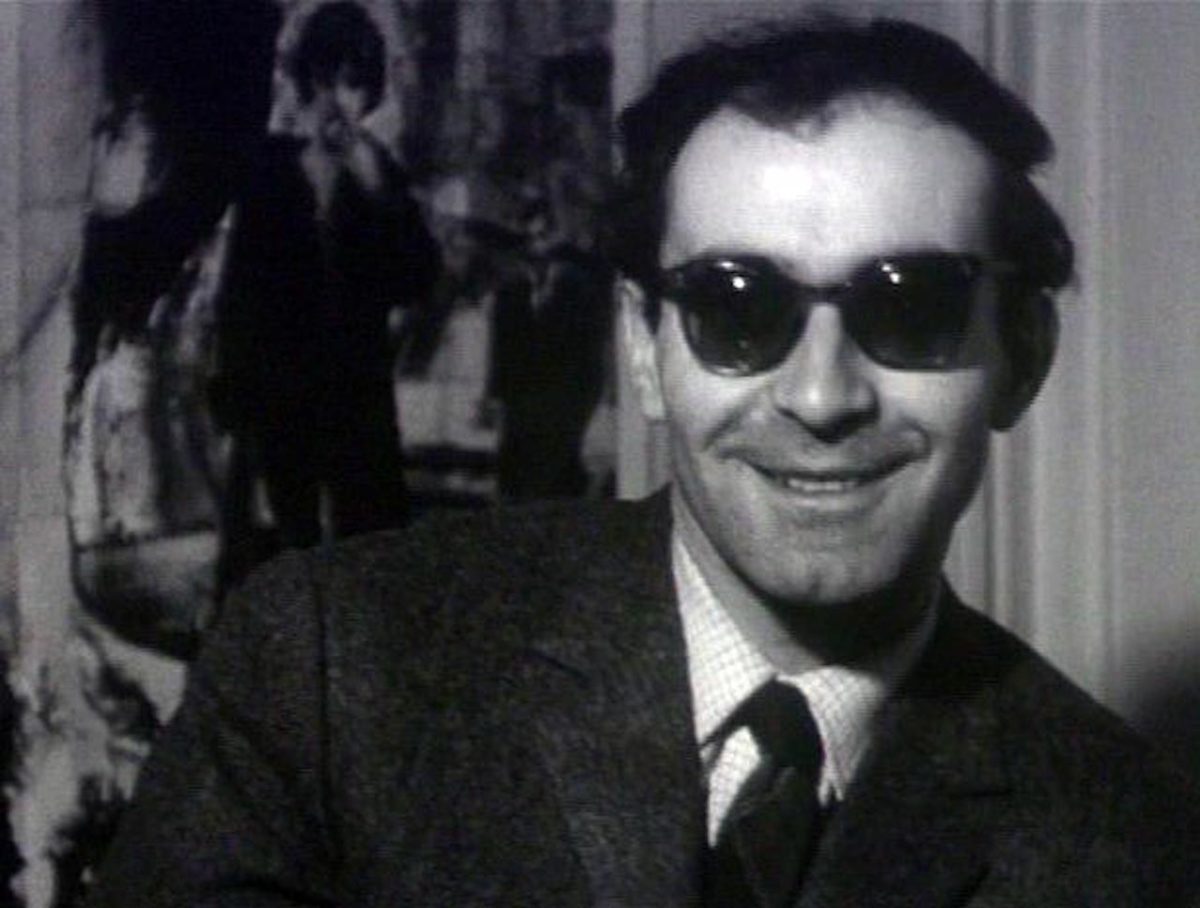
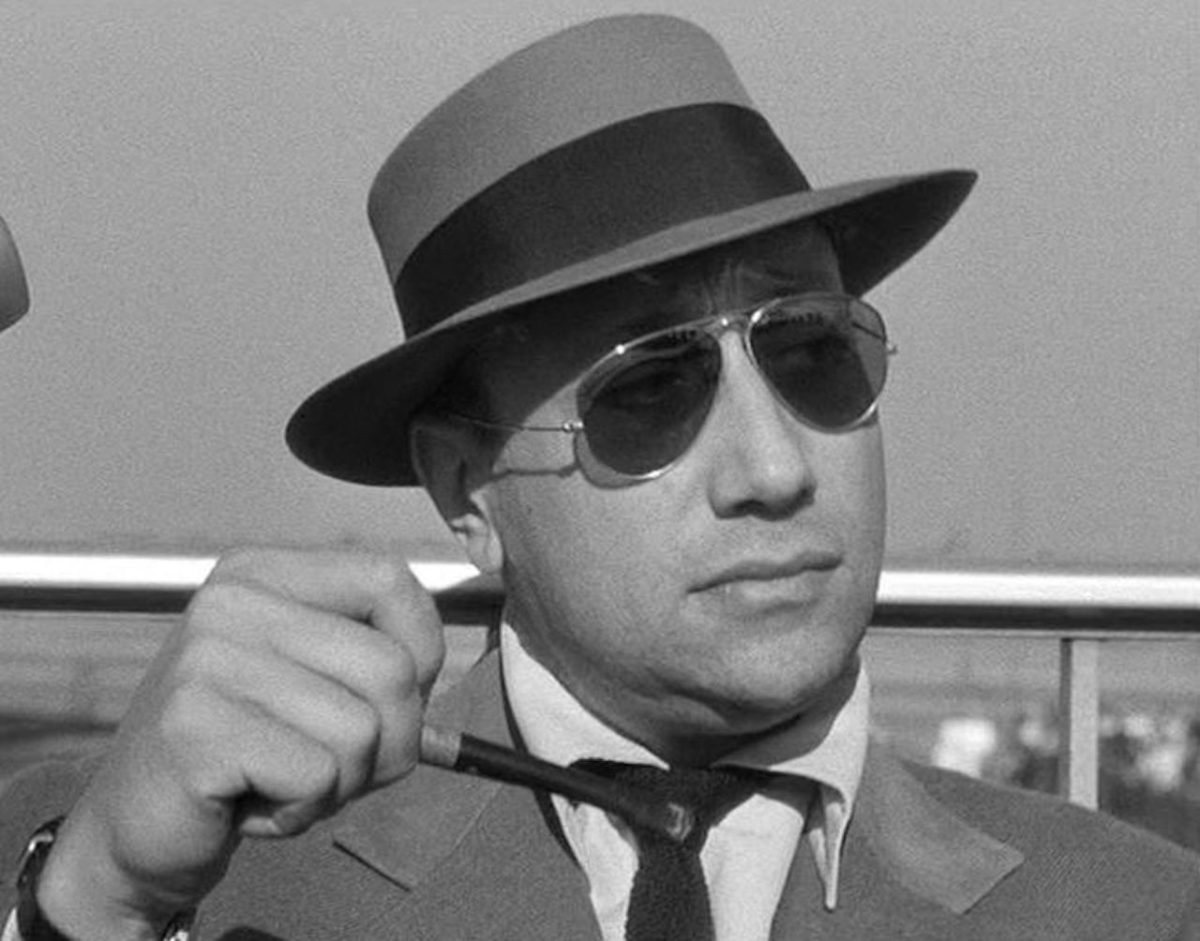
Jean-Pierre Melville’s appearance in Godard’s first feature and his response to Jean Seberg’s Patricia have become the stuff of legends. A number of other filmmakers, from Fritz Lang to Samuel Fuller followed Melville in appearing in Godard films in the 60s, and all did so as “themselves.” Their appearances have a mythic quality. They function not primarily as characters, but as embodiments of a particular cinema, a certain idea of film. Melville and Fuller both have brief cameos, delivering iconic lines. Lang’s appearance in Le Mépris (1963) comes closest to constituting a character. But he still functions more as a mythological figure, a wise sage, quoting Corneille, Brecht, Dante, and Hölderlin at will. And when he is not quoting someone explicitly, he is quoting Godard himself: “[CinemaScope] wasn’t made for people. It’s only good for snakes – and funerals;” “Producers are something I can easily do without;” and “Death is not a resolution.” While any character in a film could be seen as a mouthpiece for the director, Lang’s case is a unique one. He’s playing Fritz Lang, but Lang as imagined by Godard, the idea of Fritz Lang. He’s not only a stand-in for the disappearing auteur of classical Hollywood cinema, but he also symbolizes a certain position toward film; the restatement of an axiomatic declaration toward the history of cinema, already professed by Godard and his friends at Cahiers years before. Putting some distance between the two, Godard’s Lang is not unhinged like Godard himself; he doesn’t punch his producer or abandon the production. “I’ll finish the film. Always finish what you start” he says at some point. But is there a trace of what Godard came to represent in other directors’ films in how he depicts Lang in Le Mépris? Did the baby already see himself in the dinosaur?
Other filmmakers (and writers) have imagined Godard tens, if not hundreds of times. From the various documentaries (2022’s Godard seul le cinéma, and the upcoming A Portrait of the Artist as a Spoiled Brat are only the latest ones), to Michel Hazanavicius’ fictional biopic, Redoubtable (2017), to a parodic version of him in Charles Bukowski’s 1989 book, Hollywood. But the essence of Godard has remained elusive and particularly difficult to capture despite his seeming omnipresence. In Mitra Farahani’s new documentary, À vendredi, Robinson, which follows the correspondence of Ebrahim Golestan and Godard, the former asks: “Does Godard still believe in cinema?” Farahani responds: “He certainly believes in the word and the image.” Recent news tells us Godard’s Funny Wars, posthumously completed by Fabrice Aragno and scheduled to premiere at Cannes, is “a collage-like work that blends fragments of images and text.” Indeed, image, sound, and text have been the three essential components of Godard’s work. But we might go a step further: they are also the three component parts of his presence.
Sonimage
The eye must listen before it looks.
In addition to the aforementioned directors, Woody Allen also appears in two of Godard’s films: in a fictional role in King Lear (1987), and as himself in the interview-film, Meetin’ WA (a promotional short imposed on Godard by producers as a condition for Allen to appear in King Lear). The entire conversation which makes up Meetin’ WA is captured from a slightly odd over-the-shoulder composition, facing Allen, with no reverse shots of Godard. There is, however, a brief sequence of Godard in another space by himself, where he is browsing through cassettes of Allen’s films, while occasionally looking offscreen. At times, Allen’s image dissolves into other images, an iris-in isolates his head in the center of the frame as his image freezes but his sound continues, or conversely, his sound is interrupted by a jazz score as his image continues to move for a few more seconds. Throughout the conversation, Allen complains about the negative effects of the growing popularity of TV, lamenting over the disappearance of the rituals of cinemagoing, as well as the smaller degree of escapism that watching films on television offers compared to cinema. Allen expresses concern over the fact that nowadays many are discovering the classics of film history on television for the first time. Of course, few filmmakers can claim to have been as attentive to, genuinely interested in, and consistently engaged with the history of cinema as Jean-Luc Godard, who, incidentally, had just made several works for television in the decade before this interview, with as much experimentation as anything ever put to the silver screen. While not an example of Godard’s presence in another director’s film, Meetin’ WA reveals something about that subject in how Godard investigates another filmmaker’s presence in his own film. In how he questions and criticizes Allen’s approach to cinema, Godard is also drawing a line between the two of them. Allen takes images, sounds, and words for what they are, uncritically and as a totality, and in this way, his mentality is perhaps not that different from the television programs he’s so concerned about. Godard’s emphasis is not on the problems of film distribution (like some of his peers in the late 60s and 70s), but mainly on production itself; a question of the politics of the image, and of seeing. To him, the main issue is not one of television versus cinema, but the control and organization of sounds, images, and texts.
If the lack of reverse shot is felt but not commented upon in Meetin’ WA, in another Godard film with a self-descriptive title, Letter to Jane: An Investigation about a Still (1972, co-directed with Jean-Pierre Gorin) the absence of the reverse shot is explicitly alluded to in the voice over. If Allen was present in flesh in the earlier film, here Jane Fonda is present only through a still image of her in Vietnam. Godard and Gorin focus on the distance between the image of Fonda (a construct) and Fonda “herself.” She is present through her absence, whereas Allen, one could say, was absent despite his presence. While Meetin’ WA hinted at Godard’s interest in separating the constituting parts of cinema (sound, image, and text), as opposed to Allen’s face-value acceptance of them as a totality, here the separation of those elements is explicit. Letter to Jane analyzes an image with the help of words and sounds. It also criticizes a text (the accompanying caption from the magazine L’Express, where Fonda’s photograph was published), and questions the position of the viewer toward the image as presented, as well as the implications that this presentation carries: what is the reverse shot of this photograph, what’s the function of the low angle of the shot, the overlooked presence of the Vietnamese man in the background, the possible meaning of the expression on Fonda’s face (and its cinematic lineage), etc.
The production company founded by Godard and Anne-Marie Miéville in 1973 was named “Sonimage” (Soundimage). Book-length studies like Jean-Luc Godard: son + image and Godard: Sound, Image, Politics also emphasize the centrality of sound and image as distinctly separate yet connected elements for Godard (while themselves are studies in form of text, about “sonimage”). Writing about the Dziga Vertov period in the latter book, Colin MacCabe connects Godard’s tendency of the “deliberate separation of various matters of expression” which compose the film, to Vertov’s idea of montage, which became the slogan of the Dziga Vertov Group: “Montage before shooting, montage during shooting and montage after shooting.” Considering the dynamic interdependence of object and subject, MacCabe continues [my emphasis]:
If many filmmakers would take their pro-filmic event as sufficient in itself, Vertov’s emphasis is that to constitute this event in self-sufficiency is to impose already a view on it, to produce it for and with its appropriate subject. Montage before shooting entails a commitment to placing before the camera material which is not unified in itself but which already invites contradictory positions from which to see it.
Similar to this “unified material,” Godard’s presence should not simply be seen as his person, but as an extension of his approach to the cinema. If for practitioners of Direct Cinema, montage epitomized the sin of manipulating reality (and the spectator), as MacCabe says, Godard used the techniques of Direct Cinema to instead disrupt the pro-filmic event. In a sentence reminiscent of his differences with Allen in Meetin’ WA, Godard said of Richard Leacock and co. that “they have no idea what it is they are staging […] pure reportage doesn’t exist.” Like Straub and Huillet, Godard was hyperattentive to the fact that during the production of any film, there are in fact two different productions taking place concurrently: one of the image and one of the soundtrack. Sound isn’t there merely to complement the images. It’s not a given but has its own conscious and separate (yet interconnected) process of production. This is different from how the majority of filmmakers view sound: as mere accompaniment to the image, an afterthought that has to conform to the images. Considering the dialectics of sound and image in Godard’s films, it’s not surprising that he also separates them as elements of his presence. How Godard approaches other filmmakers in Meetin’ WA and Letter to Jane gives us concrete clues into how he controls his own presence: by breaking it down into its component parts (image, sound, text) instead of presenting it as a unified whole; denying the complete view, and offering only fragmentary glances and traces of himself, to challenge how others want to view him (as the director of À bout de souffle, as a symbol of the French New Wave, as a counterculture superstar, as a pretentious fraud, as an [ex]radical, etc.). Godard’s presence thus becomes not a ready-made object, but a process of putting together those component parts, the distilled essence of his cinema(tic thinking). In Scénario de ‘Sauve qui peut la vie’, he says [my emphasis]:
I realize that when I speak to you…while seeing…not images, but the start of images, embryos…that you might think that I am trying to show you images from the film, how they will be. But I am actually trying to show you how I will organize them: the system. If we were to compare it to biology, it wouldn’t be a human body, but rather the system will create the forms. And, of course, creation will happen during editing and shooting. What I’m trying to show you is how I see things, so that you can judge whether I am able to see, and what I have seen […] And you can say, “No, he’s wrong. There’s nothing to see.” So, what I would like to show you is a way of seeing.
Godard increasingly challenges how others not only present themselves (Allen) or are presented (Fonda), but also how they intend to present him (Varda) or ask him to present himself (Golestan). In doing so, he raises fundamental philosophical questions about the nature of the relationship between subject and object in cinema. Indeed, Godard’s affinity with the ancient Greek philosopher Heraclitus extends beyond their shared penchant for inscrutable aphorisms; it also encompasses a mutual affinity for a dialectical investigation of the constituting elements of their respective worlds (the natural for Heraclitus, and the cinematic for Godard). Not taking images at face value, Godard dissects them into their component parts, their ideological underpinnings, their economic base, and their film-historical place, and ponders upon how these constituting elements are dialectically related. And in this, he does not make an exception for representations of himself.
A/Langue the Coast
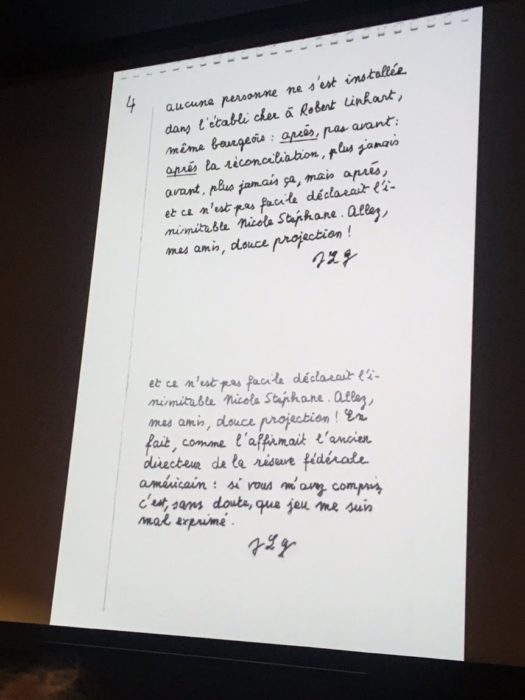
Unable to attend the New York Film Critics Circle Awards to receive his career-achievement award in 1995, Godard sent a letter to NYCC chairman Armond White, suggesting the award be sent to the Bleecker Street Cinema (“if remaining”), a pioneering film revival houses of New York City in the 60s. Another letter, four pages to be read aloud to the audience, was sent to the Cinémathèque française’s 2020 Anne-Marie Miéville Retrospective. The letter contained a note to the reader: “Please, respect the commas in your diction.” Included was an image of a naked child embracing a frog. Commenting on the letter, Andy Rector writes in Kino-Slang:
This cameo of a frog gifted the translator a dilemma, or a bit of langage; the smile mentioned in the letter as ‘de grenouille’ [of a frog] was translated as ‘piggy bank’ but must also be understood, and embraced, as a ‘frog’s smile.’
Part of the letter reads “Well, let’s stop the lists, the game you all know, you’re going to quote me on ten thousand exceptions, but I fear that only your langue will speak, without the participation of langage, or too little, and too slyly.” Godard himself appears in the letter, in text, but while his presence might take the form of text, as Rector shows (and Godard states) he doesn’t limit himself to the realm of langue. Godard always transcends into langage.
Amid the conversation about television in Meetin’ WA, Allen points out that Godard’s use of on-screen text is more “cinematic” whereas he himself uses text as a literary device in his films. While Godard was already experimenting with text since the 60s, the turn to video allowed him to accelerate his experiments, as he didn’t have to deal with the complications of optical printing in film anymore. While this inherent capability of video technology was used chiefly during sports broadcasts or presidential debates to relay important information on-screen, for Godard, it presented the possibility of writing directly and freely on the image, and as MacCabe writes: “to complicate the relationship between images, sounds, and words, and thereby to include the spectator in the construction of the image, to throw the ideology of the visible into crisis.” This complex triad of sound/image/text is, in a sense, Godard’s langage. Langue is only one part of this system. But nonetheless, it can appear independently (or even in negation) of the other two.
Agnès Varda’s daughter, Rosalie, who also produced Visages, villages has since spoken about Godard’s non-appearance at the end of that film: “I really think it was a very generous act on his part. And that’s what my mother came to understand. Jean-Luc knew that if he appeared in the film’s last scene, he would steal the entire film from her. It would no longer be my mother’s last film, but Godard’s last appearance” (Carlos Reviriego, El Espanol). Godard’s actual intention can’t be known and is of less interest, but Rosalie Varda’s point stands, as it would most likely have become about Godard’s appearance (and even his lack of appearance has been one of the most talked about aspects of Visages, villages). Instead of appearing, Godard left a note for Varda, which read “Along the Coast”. Varda explained that the phrase refers to a restaurant where she, Godard and, Jacques Demy would regularly eat in the 60s. This was seen as insensitive and hurtful on Godard’s part by many, another manifestation of his perceived petulance. But if we have learned anything from Godard’s cinema so far, it’s not to take images, sounds, or texts at face value, but to always consider the proverbial “reverse shot.” If it took a 25-minute film to draw out the philosophical differences in approach to cinema with Woody Allen in 1986, it takes a simple note to do so with Varda in 2017. Varda was looking for Godard in his totality, and Godard appeared in one of his component parts. If “text” was missing from the “sonimage” equation before, here, that absent component, which was implicitly contained in the form of appearance of “sonimage”, was transformed into the content and was now all that remained.
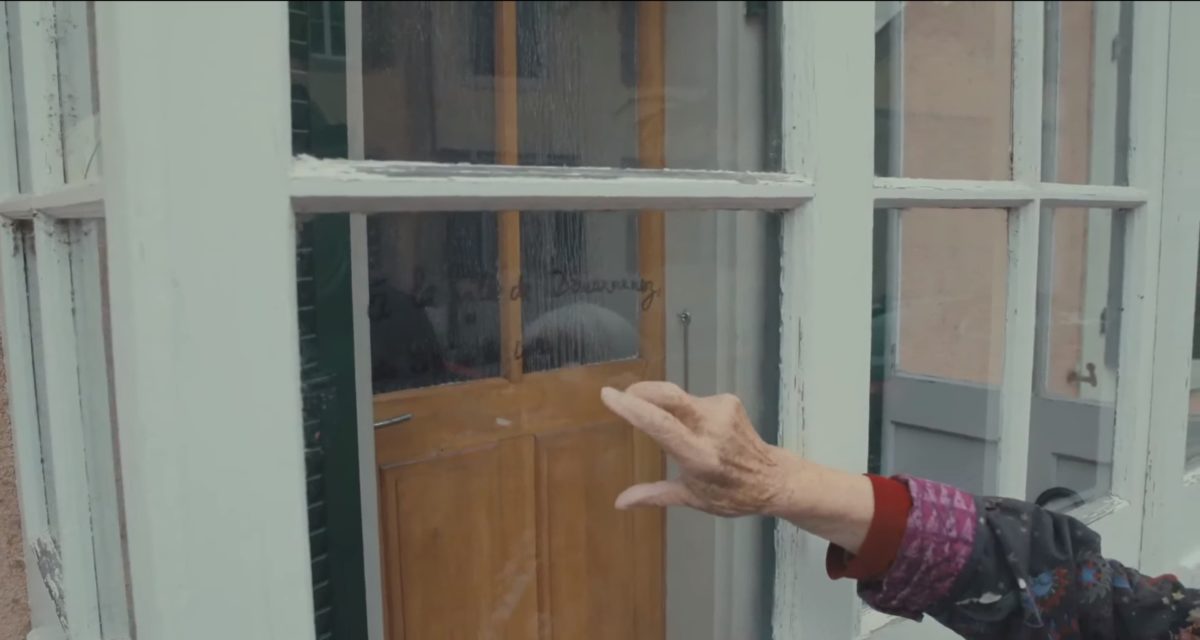
Wind from the West
The important distinction to make when you’re talking about the genuine quality of a painting is not so much whether it is a real painting or a fake – its whether it’s a good fake or a bad fake.
On May 9th, 2018, a short film by JLG, titled Vent d’ouest, about the controversial plans for the construction of Aéroport du Grand Ouest and the long ZAD resistance to it, appeared on the internet. To cinephiles, it was like an unexpected gift from the gods of cinema, and the reviews started pouring onto Letterboxd: “Sound and image as a possibility of resistance,” “JLG throws a bomb,” “underneath the images there is resistance.” Soon, word came from Godard’s camp that in fact, this is not a film by Jean-Luc. And so, Vent d’ouest (playing on the title of Godard’s Le Vent d’est) turned out to be a fake, but crucially, it was a good fake. Once again, Godard’s presence is evoked despite his absence, this time via an approximation of the different constituting elements of his films. Vent d’ouest reproduces a persuasive impression of Godard’s use of on-screen text (overlapping words, the Godard-favorite shade of red, irregular placement of words around the frame); a specific arrangement of archival images (from the history of cinema to contemporary drone videos and a cropped and saturated reproduction of Goya’s Saturn Devouring His Son); and sound (a convincing imitation of Godard’s voice, diction, and tone). The rhythm, transitions, sound design, and political content, are all also in the vein of what we expect from Godard. Vent d’ouest brings up fascinating questions about authorship: as a new Godard, the film was hailed by cinephiles world over. Ever since the revelation that it was not a genuine Godard, it’s been rarely talked about. But what the film understood was the different and distinct elements of Godard: the triad of image, sound, and text. Even if he’s not present in any form (behind or in front of the camera), a Godardian attitude toward sound, image and, text persists. In fact, there are others who seem to agree with the above quote from Welles, like the group of filmmakers and film workers, including Philippe Garrel, Aki Kaurismäki, Valerie Massadian, etc. who issued a statement following the release of Vent d’ouest. Part of the statement reads:
So, if this film is a fake Godard, the truth is that we heard a call there. The truth is that there are evictions in Notre-Dame-des-Landes, people who are struggling will have their homes destroyed. […] We take a stand, as filmmakers. Continuity in the forces of revolt!
Decades before, Godard himself was accused of plagiarism by the Situationists for appropriating their practice of “detournement” in films like Le Gai Savoir (1969) (ironically, the Situationists had originally claimed the practice should be plagiarized by others). As Brian Price points out in his essay ‘Plagiarizing the Plagiarists’, Le Gai Savoir is composed of recycled preexisting materials of consumer culture (ads, photographs, comics, book covers, found footage, etc.). “The recycling of images allowed Godard to engage in a more artisanal mode of production, doing away with the division of labor endemic to commercial modes.” Additionally, in an interview with MacCabe, Godard has said that 80 percent of the ideas for the Dziga Vertov period films came from Jean-Pierre Gorin, while his own contribution was largely technical in nature. Despite that, he insists whatever the origin of the ideas, the finished films are still complete collaborations of both filmmakers. Given the first part of that statement, couldn’t one view Godard’s contribution to the Dziga Vertov films as the continuation of the same artisanal mode of production from Le Gai Savoir? And by extension, the use of preexisting material in films like Pravda and Letter to Jane, which were arranged predominantly by Godard based on the ideas of Gorin. In Vent d’ouest, the Godard-imitating narrator, says “In the past, there used to be only filmmakers. They weren’t technicians. Today is the reign of technicians. Supermarket technicians, mobile and television technicians, audiovisual technicians.” We might ask the following: can Godard’s presence in the Dziga Vertov films be seen as a trace of audiovisual technique? And if so, isn’t he also present in Vent d’ouest, conjured by other audiovisual technicians as a ghost in the images, sounds, and words?
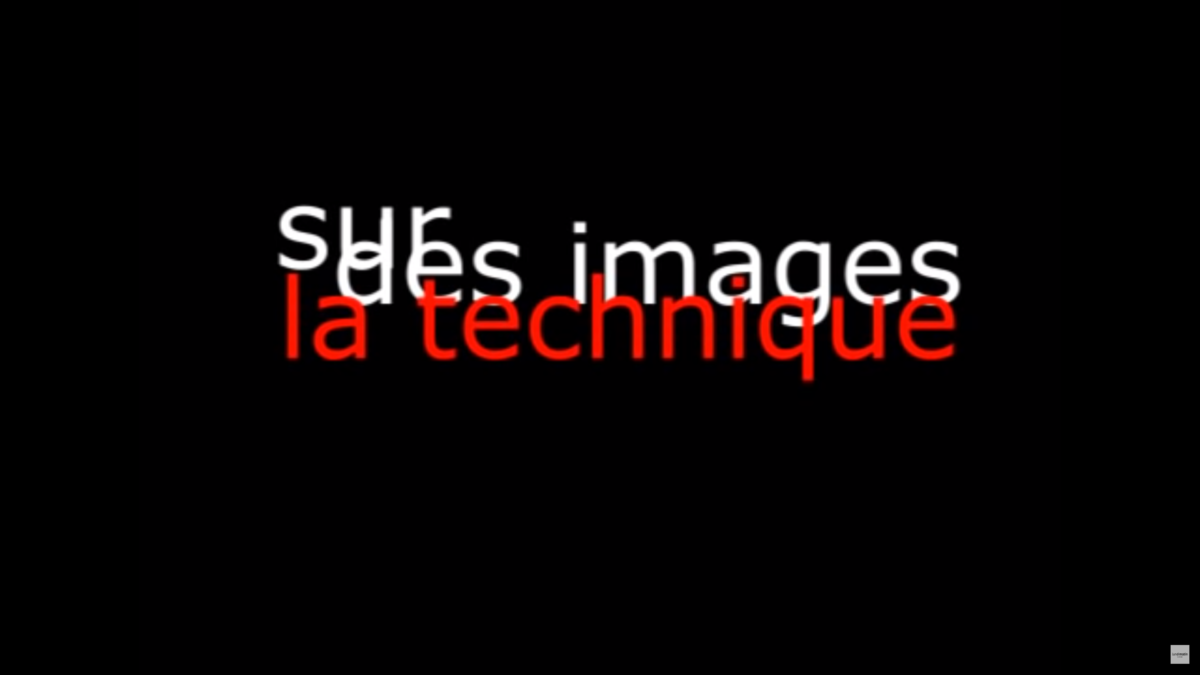
Sound+Image+Text: Un adieu en langage
I’ve read it ten times. I know what he wants to say, but…I don’t understand any of it! If I were to write such a sentence…I wouldn’t be able to do it at all! This is not my language.
But langue is not langage.
Eyes and ears are bad witnesses to men if they have souls that understand not their language.
Ebrahim Golestan’s weekly correspondence with Godard, suggested and set up by filmmaker Mitra Farahani as the premise of her documentary À vendredi, Robinson, was welcomed by both filmmakers. But their ideas about the correspondence turned out to be rather different from one another. Golestan, who hasn’t made a film since 1974, has always been more a man of literature than cinema. A prominent literary figure, fiction writer and translator, he only ever made two features and a handful of short films, but the impact of his numerically small cinematic output was and remains immense in the context of the Iranian New Wave. Like Godard, language has also figured prominently in Golestan’s work. Language as spoken word, specifically poetic, and highly literary narration over images. Whether it be the radio program at the beginning of Brick and Mirror (1964) that sets the mood for the rest of the film, or the eloquent narration of the short documentary The Crown Jewels of Iran (a part of which Golestan is seen watching in À vendredi). Yet, despite his expertise on the matter and his fluency in at least Persian, English, and French, Golestan can’t understand the language in which Godard is communicating with him. Godard’s emails include paintings by Matisse and Goya (the same Goya as in Vent d’ouest and a couple of his other films), videos of him in his apartment, or of construction work in the street, as well as passages from writers like James Joyce and Edgar Allen Poe. In other words, his emails are made up of deconstructed building blocks of his films. Hoping to decipher Godard’s cryptic messages, Golestan has the following to say about a passage from Joyce’s Finnegan’s Wake that he’s been sent one Friday.
To understand Finnegan’s Wake, you have to know Latin, Greek, Italian, French, English…because each word is made up of several other words. When you read the text aloud, the vocal association of these words will guide you to related words in the corresponding languages I just mentioned. And it’s by following that thread that you will discover meaning. Well, maybe he’s trying to do the same thing!
Golestan comes very close, but he’s missing something crucial. The English word “language” has two corresponding equivalents in French: langue is the individual languages of Greek, Italian, Latin, etc. that Golestan is speaking of. But Godard is concerned with langage: the phenomenon of language, the human capacity to communicate through language. One could argue that langage for Godard is what cinématographe was to Robert Bresson: at once a negation of the predominant perception of cinema, and the emphatic assertion of an alternative with its own distinct parameters. As an astute literary observer, Golestan is quite right that Godard is doing the same thing as Joyce, but he’s also correct that he himself doesn’t quite comprehend it. The disconnect stems from the fact that what Joyce did with langue, Godard is doing with langage. Not only with the langues of French, German, and English but also with images and sounds. When Golestan writes a five-page letter to his pen pal in Rolle on the subject of language, Godard responds: “But that is all langue. It’s the voice that speaks the langue. It has nothing to do with langage. Which is a kind of image/speech combination.” Decades before, Godard was already asked about the connection of Finnegans Wake to his work:
MacCabe: “Although colour’s very important in your work, I couldn’t find any way to talk about it. It’s like a difficulty that I have with Joyce’s Finnegans Wake. The most complex, difficult part of the book is about the children’s discovery of colour and how that’s related to sexuality and to shame. I’m convinced there’s something there, but I can’t say it.”
Godard: “One can’t say it … It’s fifty years since I read books like Joyce or Céline. But I think that in a movie something can be done, that you can mix things like Joyce but in a normal way and more accessible too, not difficult because to look is not something uneasy.”
To Golestan’s “I know what he wants to say, but…” Godard had already responded in the 70s: “one can’t say it,” in langue, “but in a movie something can be done, you can mix things,” one can communicate through langage.
Godard’s cinema has always been predicated on the participation of the audience in the generation of ideas, on an active joint investigation of how sounds, images, and texts, in their complex dialectical relationship, produce meaning and emotion. This is well-understood about his films, but what about his presence? In Six fois deux (1976), made for French television, Godard makes the issue rather explicit. As he interviews different people, it becomes evident that neither he nor they know the answer to the questions being put forth in advance. So, what are we seeing? We are seeing the literal participation of the viewer and the filmmaker in finding an answer to a problem. It is in this sense that the viewer has to become complicit in producing meaning. As MacCabe writes, “there is no message independent of the relation between the sender and receiver, and that relation is not understood in terms of some neutral channel but rather as a complex which cannot be analyzed into three separate component elements.” It is in that “complex” where we can find Godard’s philosophy of cinema, his theory of communication, his forms of presence in this documentary or what he refers to as langage. Farahani understands this and orchestrates her film precisely around this process of communication. While the premise of the film (correspondence between Godard and Golestan) might seem rather arbitrary, it’s to the immense credit of Farahani who understood that only through such a process was it possible to afford Godard the space to appear in his own ways, through his langage, without the film trying to uncover the singular essence of his “genius,” “radicalism,” “abrasiveness”, or any other imposed single defining idea on him. There’s no single secret meaning for Golestan to decipher, but the meaning lies in the very act of communication and its constituting elements (also, notice how the contrast of Farahani’s more “hands off” approach to Godard, and her more traditional “portrait” treatment of Golestan reflects the two men’s different ideas of communication). Like the interviews of Six fois deux, the distinct forms of Godard’s presence set in motion an act of exploration for both parties which produces meaning and emotion through mutual interactions, and not simply through the conveyance of preconceived knowledge or predetermined meaning.
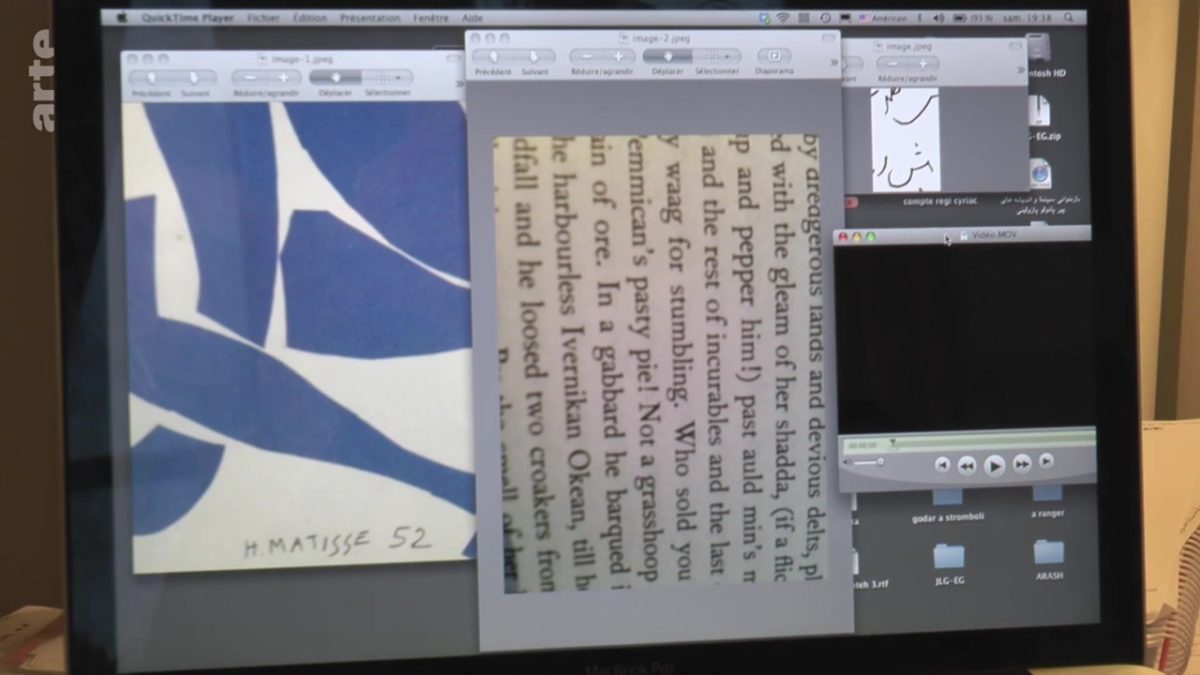
Thing/No Thing/Nothing
Forms making their way toward speech. Precisely: a form which thinks. Cinema was first made for thinking. This would soon be forgotten.
If Godard refused to lend his presence in a straightforward manner, it was not out of mere petulance or angsty rebellion, as is believed by some. Rather, it was because he understood that his presence would be sought as that of an icon, a lifeless museum-piece, an easy-to-define symbol (Hazanavicius’ abominable biopic, Redoubtable, and Farahani’s admirable aforementioned documentary provide compelling counterpoints in their respective failure and success at approaching Godard). When Varda was looking for Godard in Rolle (or more accurately, for his sound and image), she was searching for a superficial resemblance to her companion JR, a callback to a different time, a melodramatic moment of comradely reunion, a nostalgic twist for an ending. Godard’s eventual “appearance,” was the negation of what Varda was looking for in both form and content. But by that, Godard didn’t simply derail Varda’s film or entirely discard her thesis, rather he brought back the issue of his presence on an elevated plane of thought. Godard believed in cinema as a “form which thinks,” and his commitment to this idea extended beyond his own films. He deemed langue insufficient as a generative means of communication, and instead relied on the sound/image/text dialectics of langage (appearing in their unity or component parts) to sublate the request for his static presence into a dynamic one, in this way, responding to an unproductive thesis with an antithesis which produces the synthesis of a thinking form.
But it would be insufficient to merely assert that Godard thought through the form of cinema. In some way, all films think. They might think stupid thoughts or think in stupid ways. Often, they merely repeat and recycle commonly accepted ideas of society at a given stage, receiving cinematic/ideological form and content at face value, and presenting it back unquestioningly. They subscribe to “cinematic common sense,” which seeks to avoid or minimize contradictions. In other words, their thinking falls into the category of formal logic. Godard also thinks, but the difference is that he actively seeks contradictions both within and between sounds, images, and words. And through that triad, he identifies and investigates contradictions in politics, society, art, cinema (its history, technology, and traditions) as well as in himself. These contradictions, he doesn’t view as problems to be resolved, but as the unity of opposites that exists within phenomena. Thing and no thing, presence and non-presence, being and not being, are not mutually exclusive, rather they are united in the process of becoming. Godard’s films, and by extension his presence are embodiments of such processes of dialectical thought. In this sense, Godard stands not only on the shoulders of filmmakers like Vertov, Rossellini, or Nicholas Ray in terms of cinematic influences, but he also stands, alongside his Cahiers mentor, André Bazin, on the shoulders of philosophers like Heraclitus, Socrates, Kant, Hegel, and Marx, as someone who not only thought through the form of cinema but thought dialectically through sounds, images, and words.
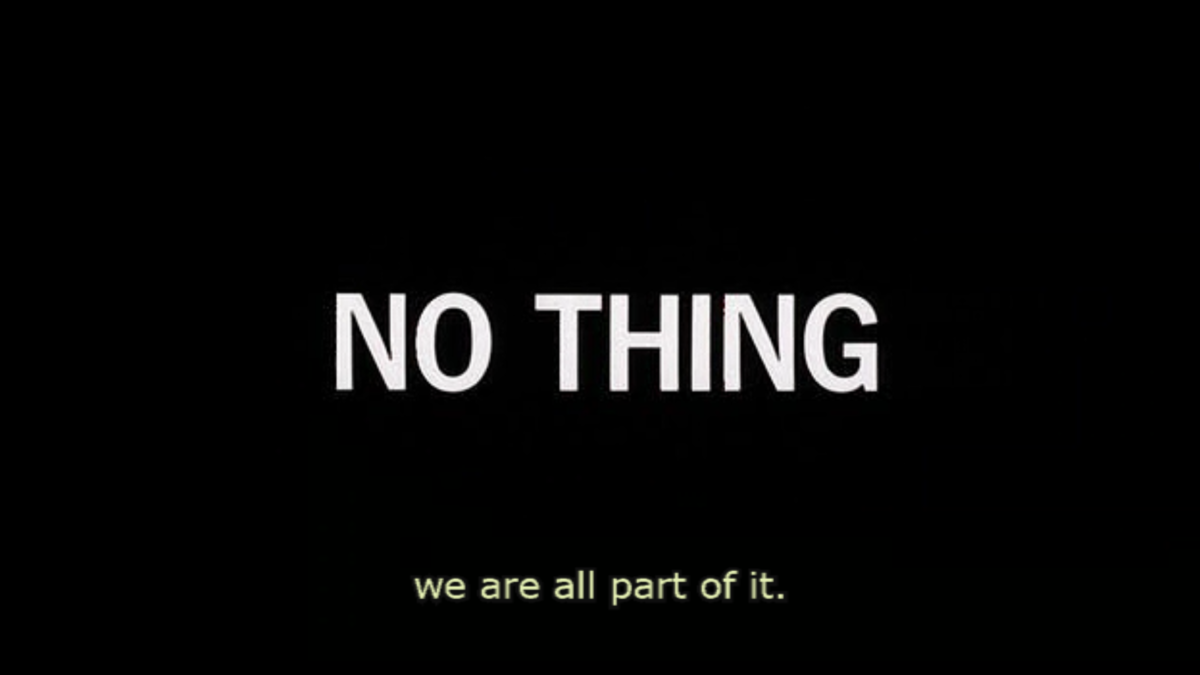
The Image Book
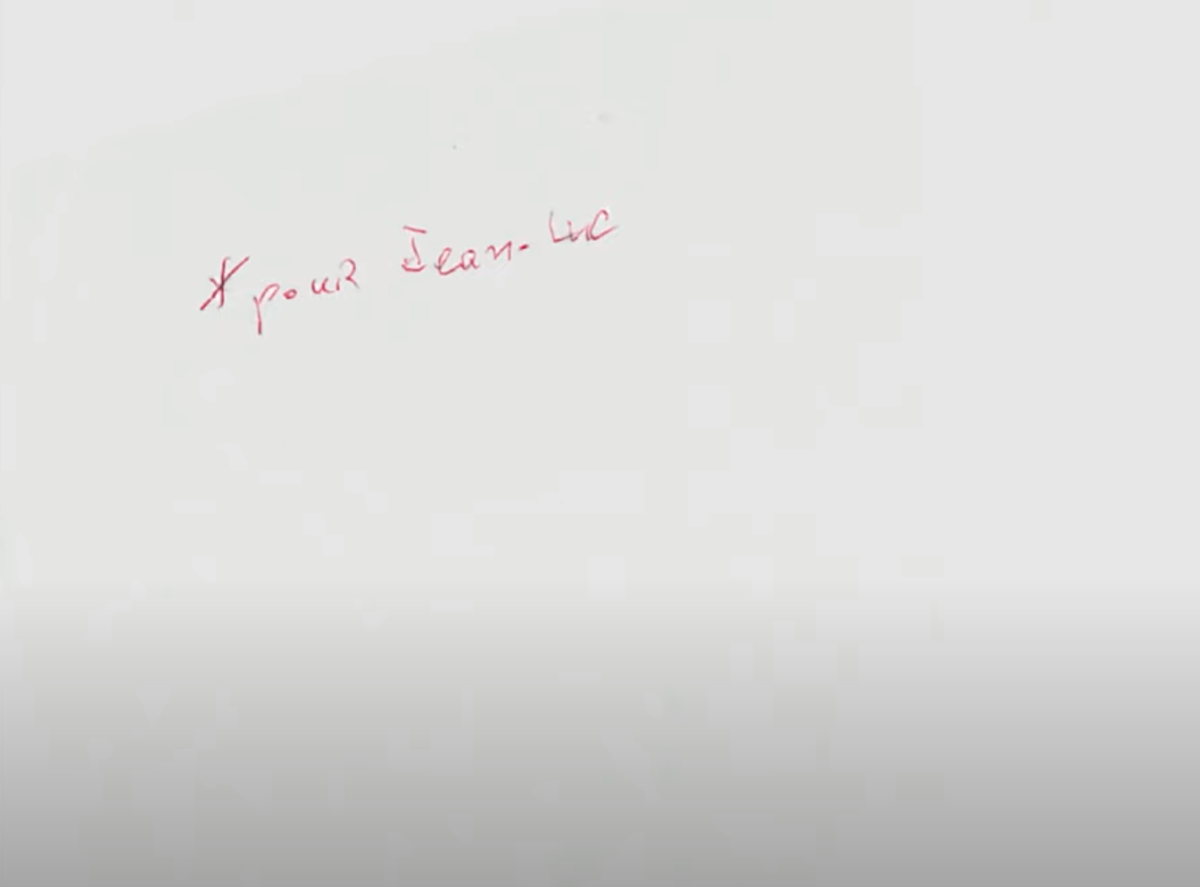
“Vladimir and Rosa forced the imperialist cameras to capture Bobby’s absence instead of our presence.”
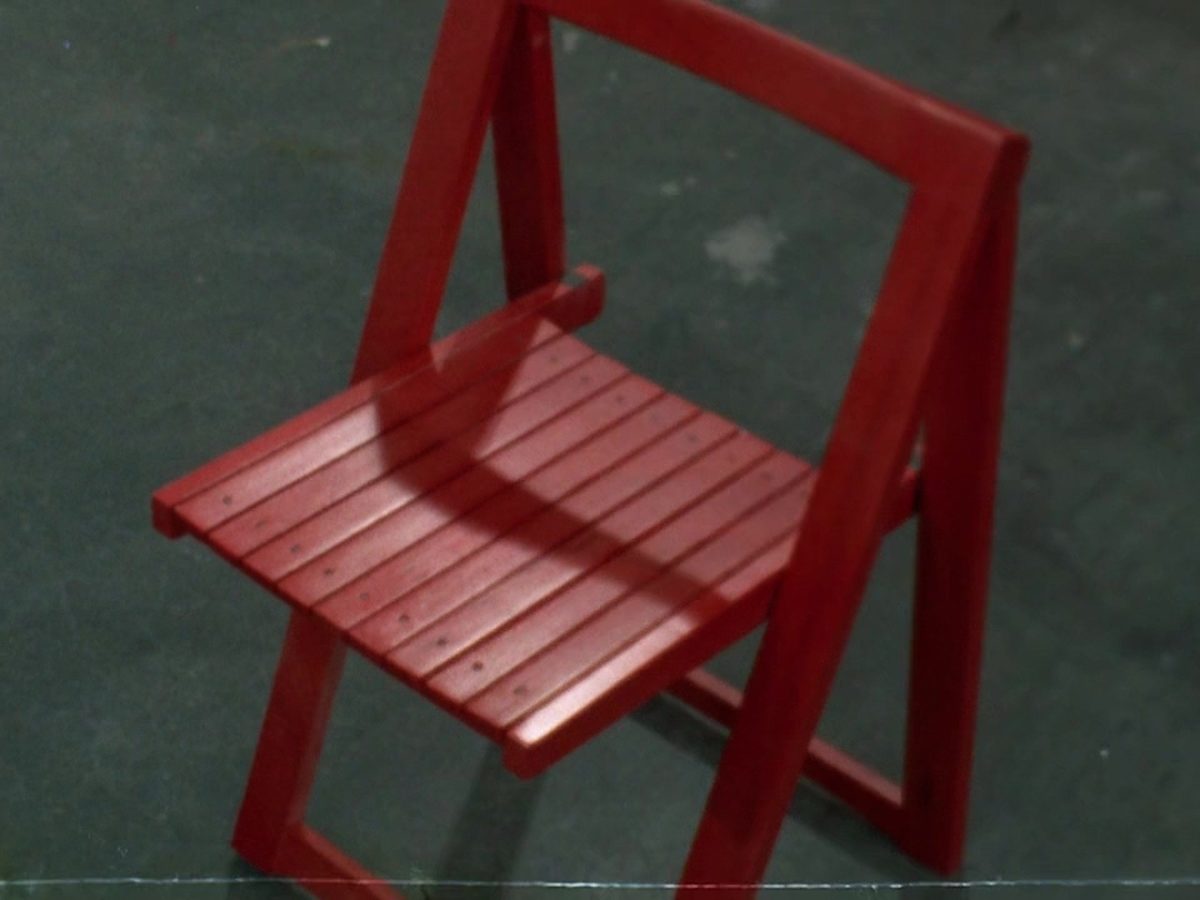
“To a picture that is sick, add sound that is not sick.” (Pravda, 1970)
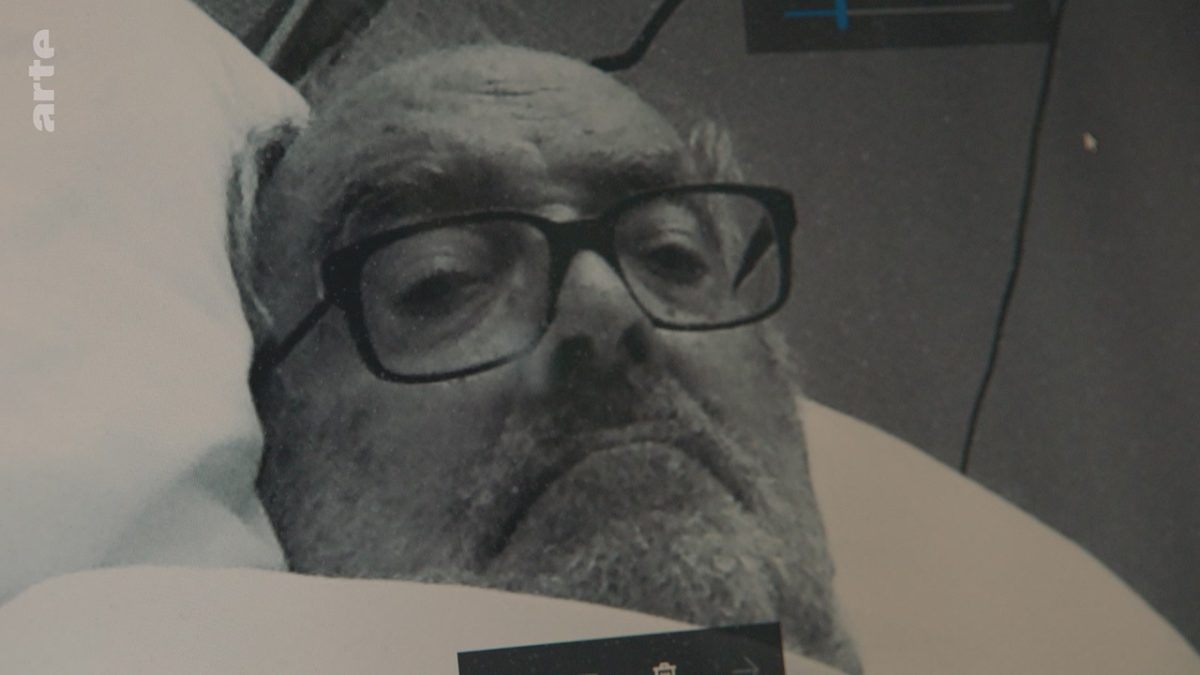
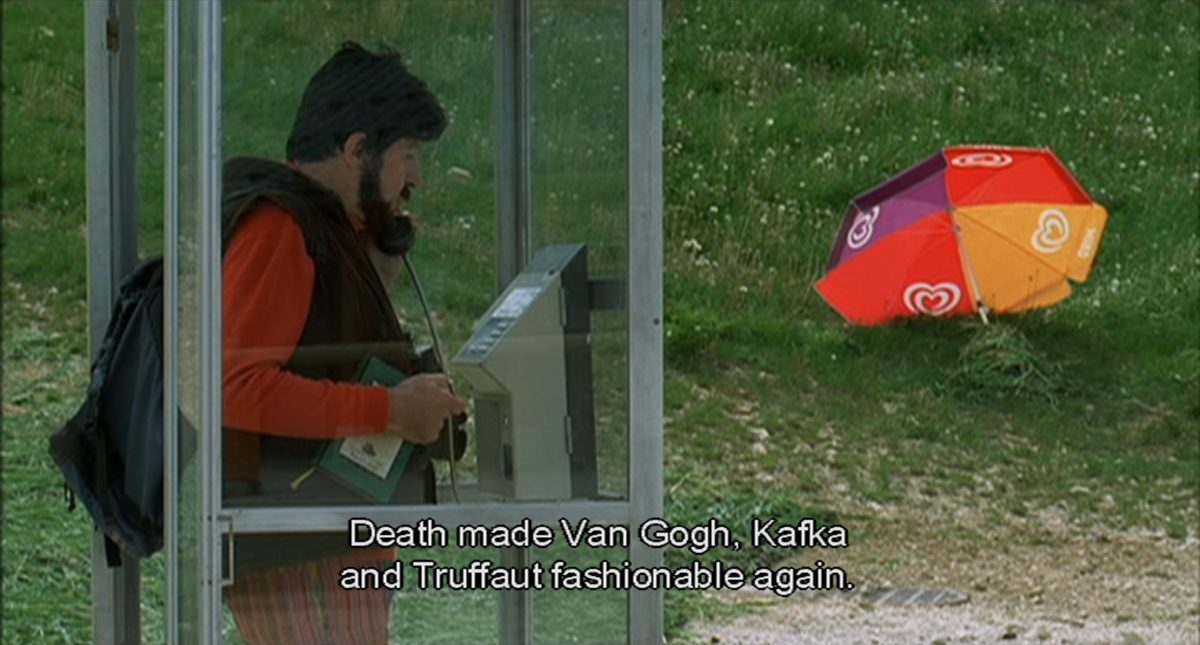
“Francois is perhaps dead. I’m perhaps alive. But then, is there a difference?” (Truffaut Correspondences)
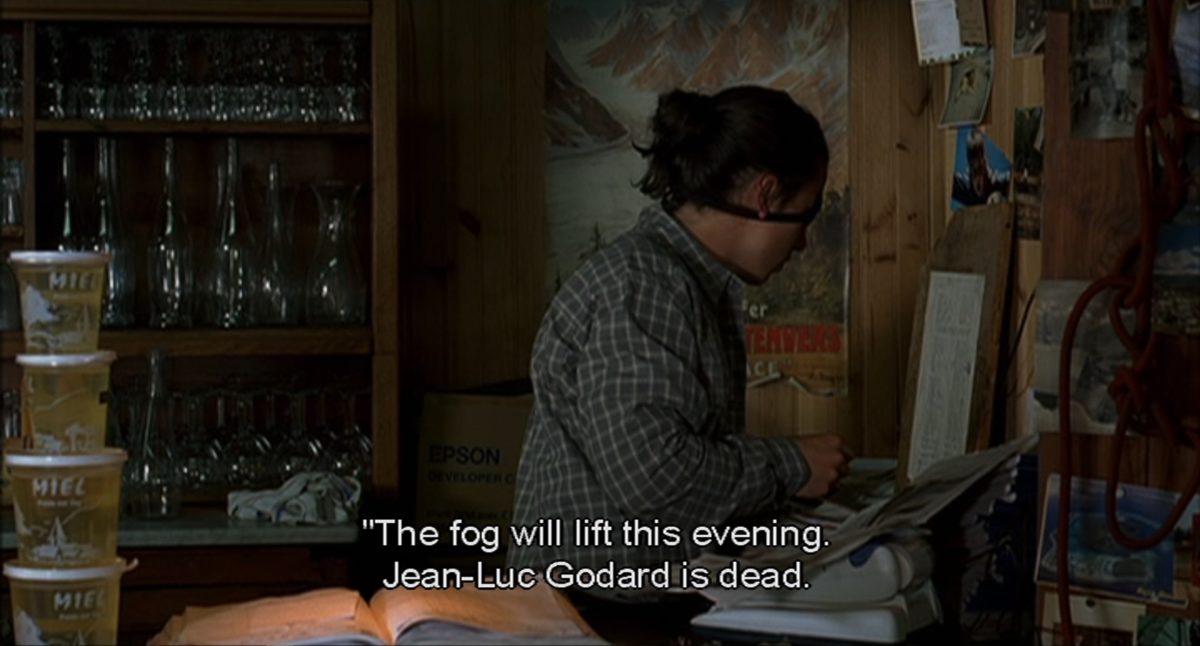
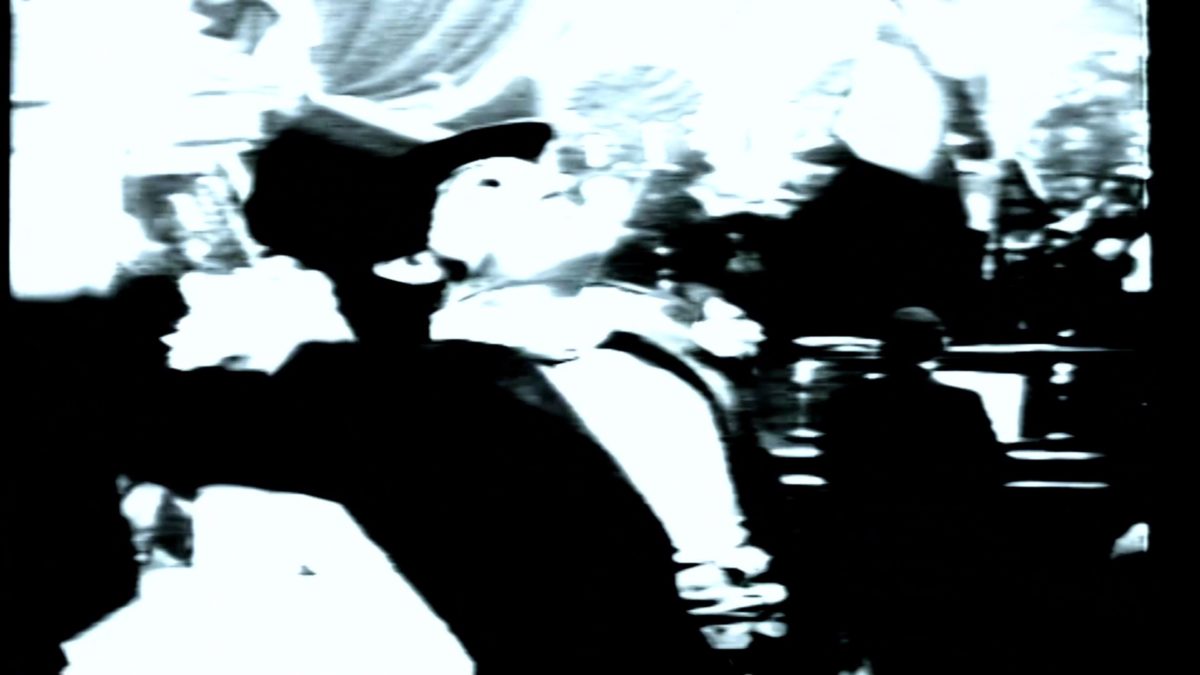
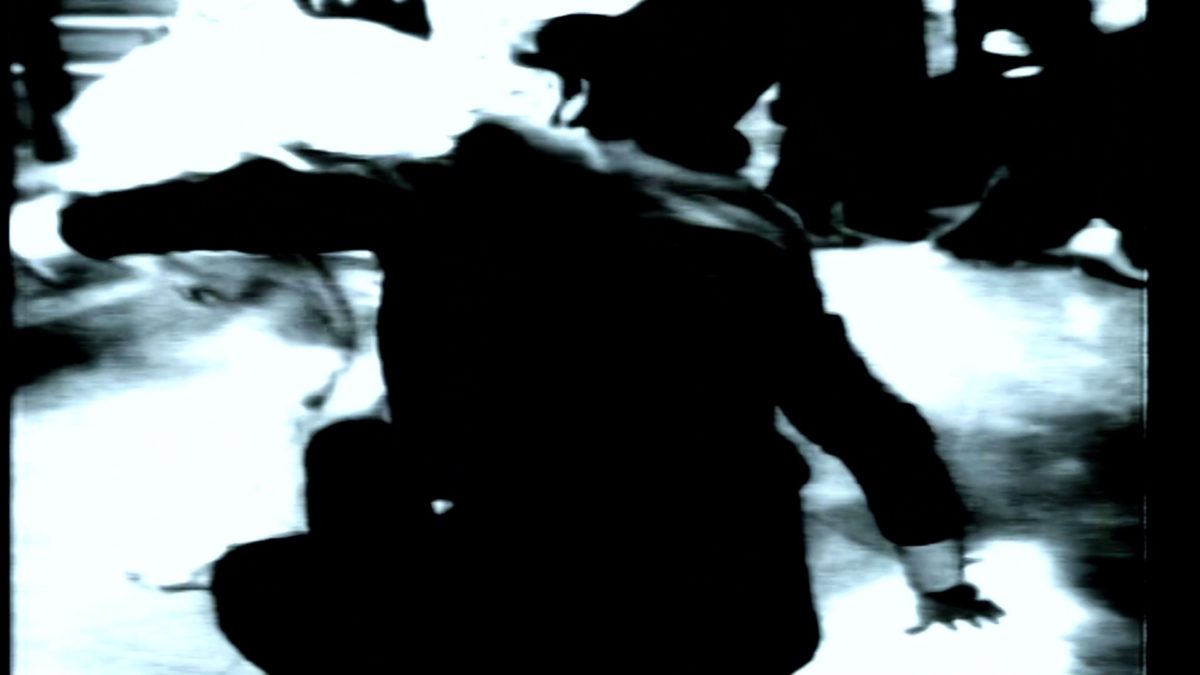
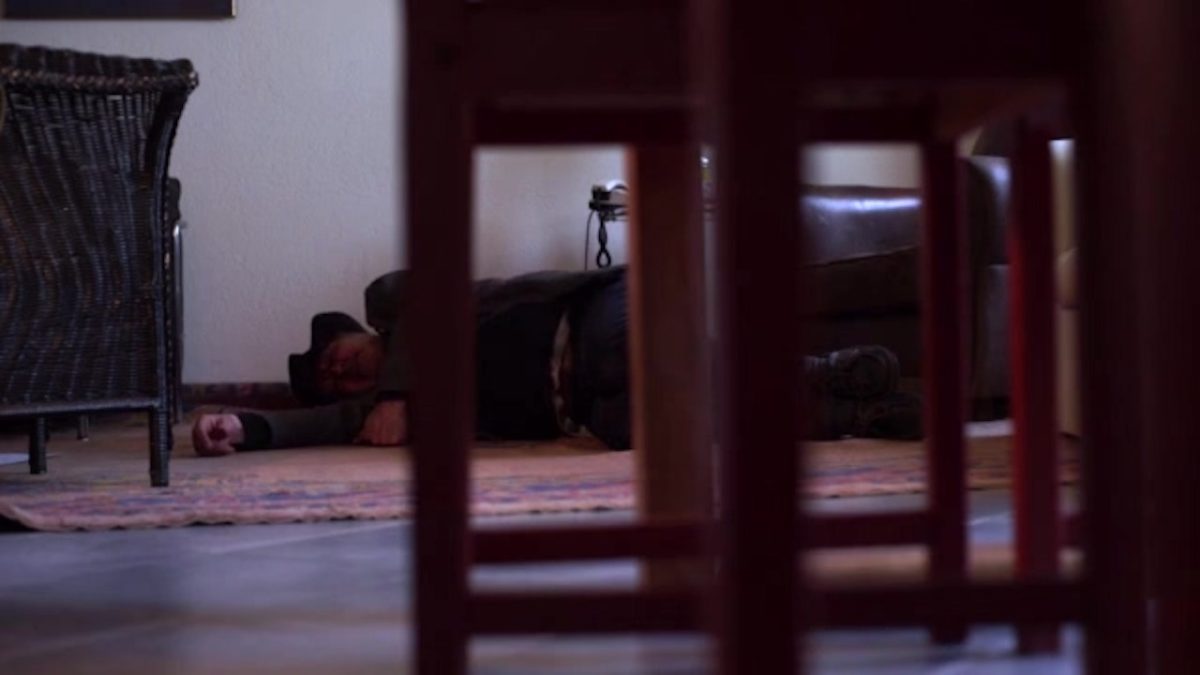
“With his death, a certain source of beauty will disappear. But beauty itself doesn’t disappear.” (Golestan, À vendredi, Robinson)
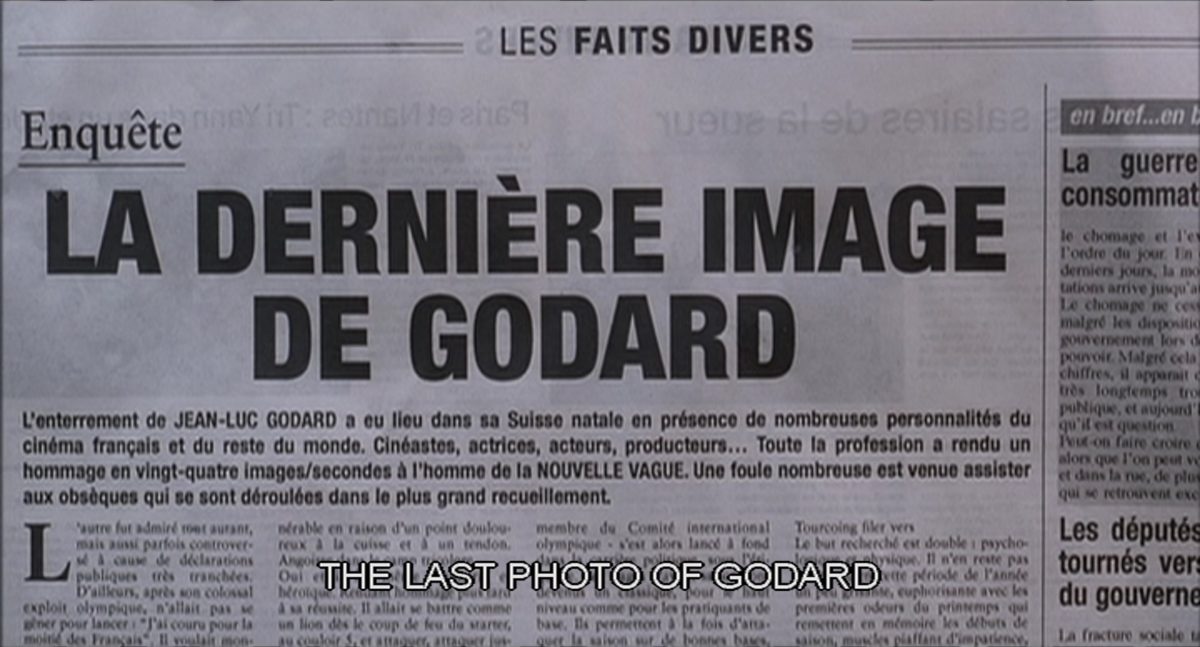
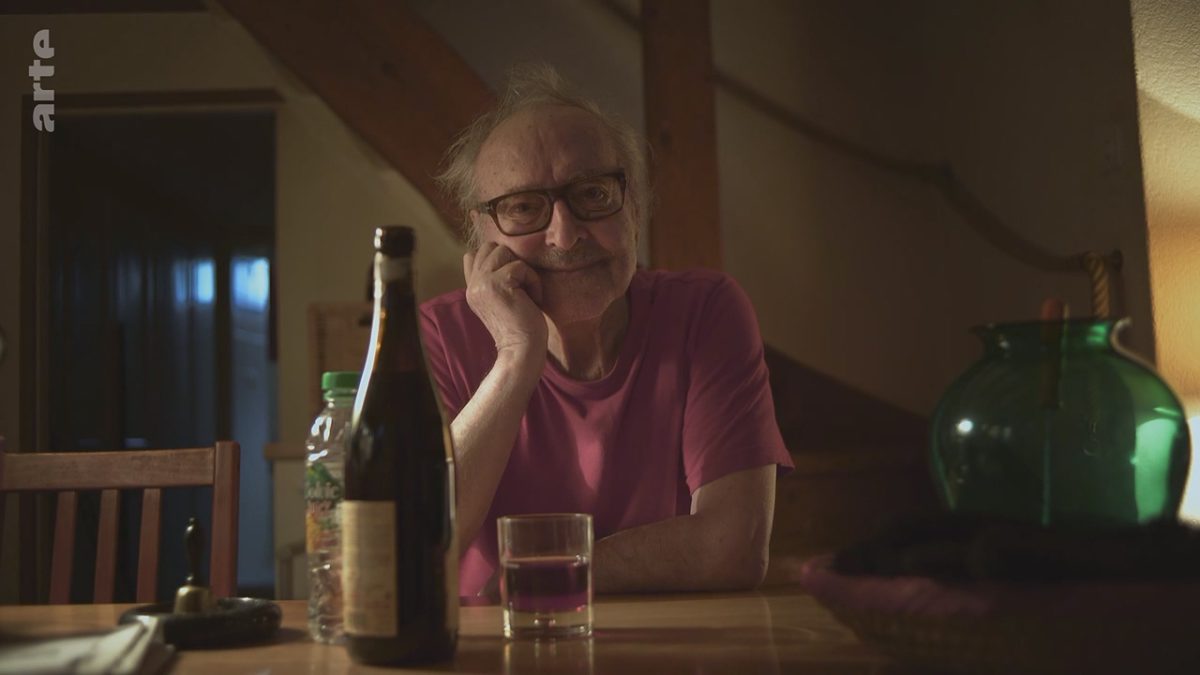
“If a man
passed through paradise in his dreams
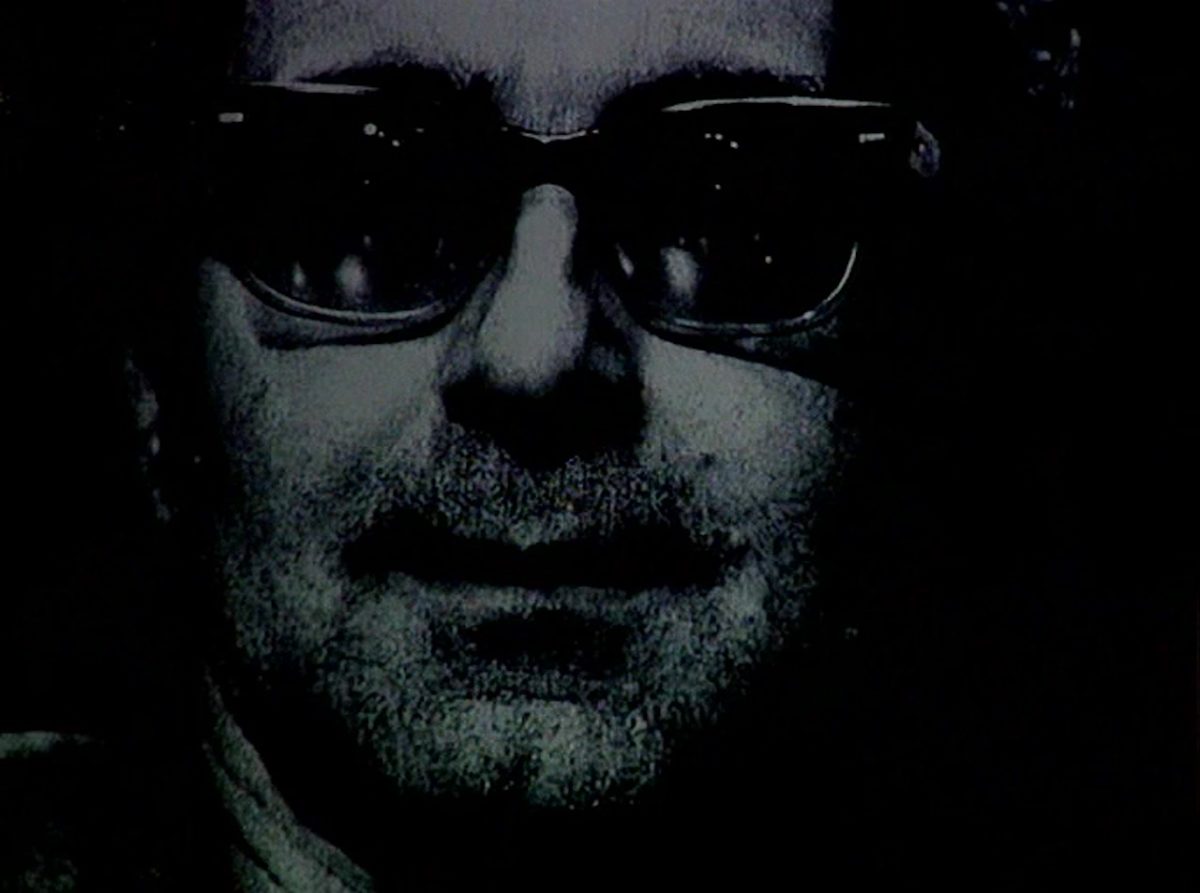
and received a flower as proof of passage,
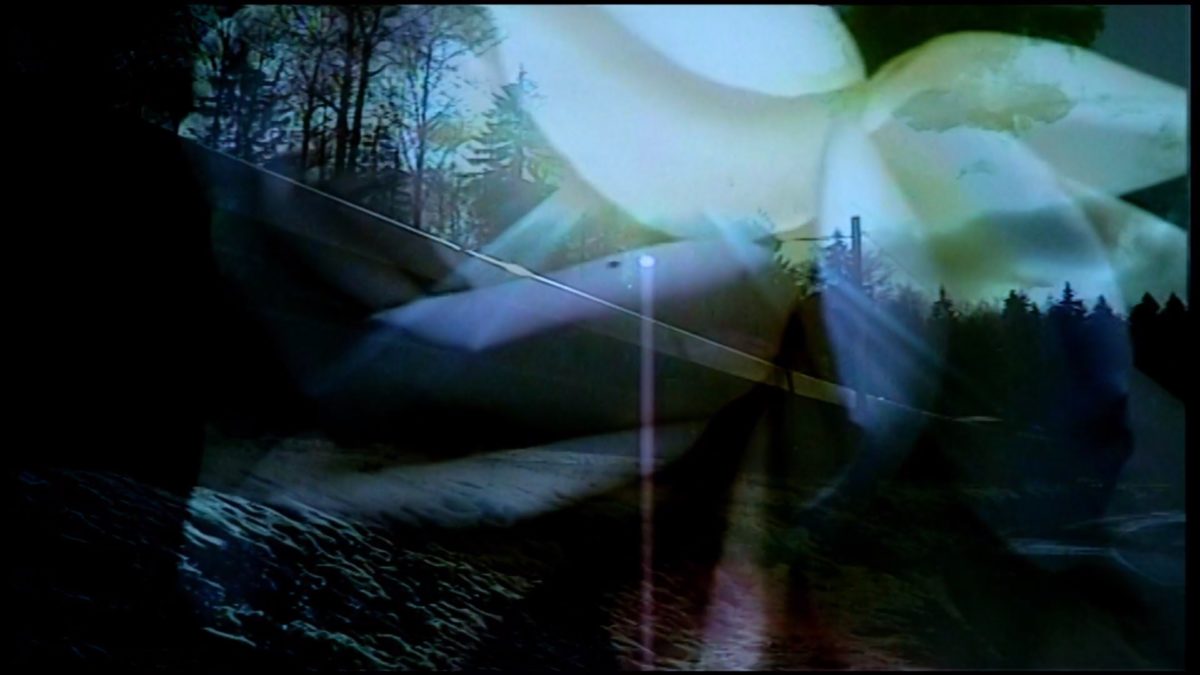
and on waking,
found this flower in his hand…
What is there to say?
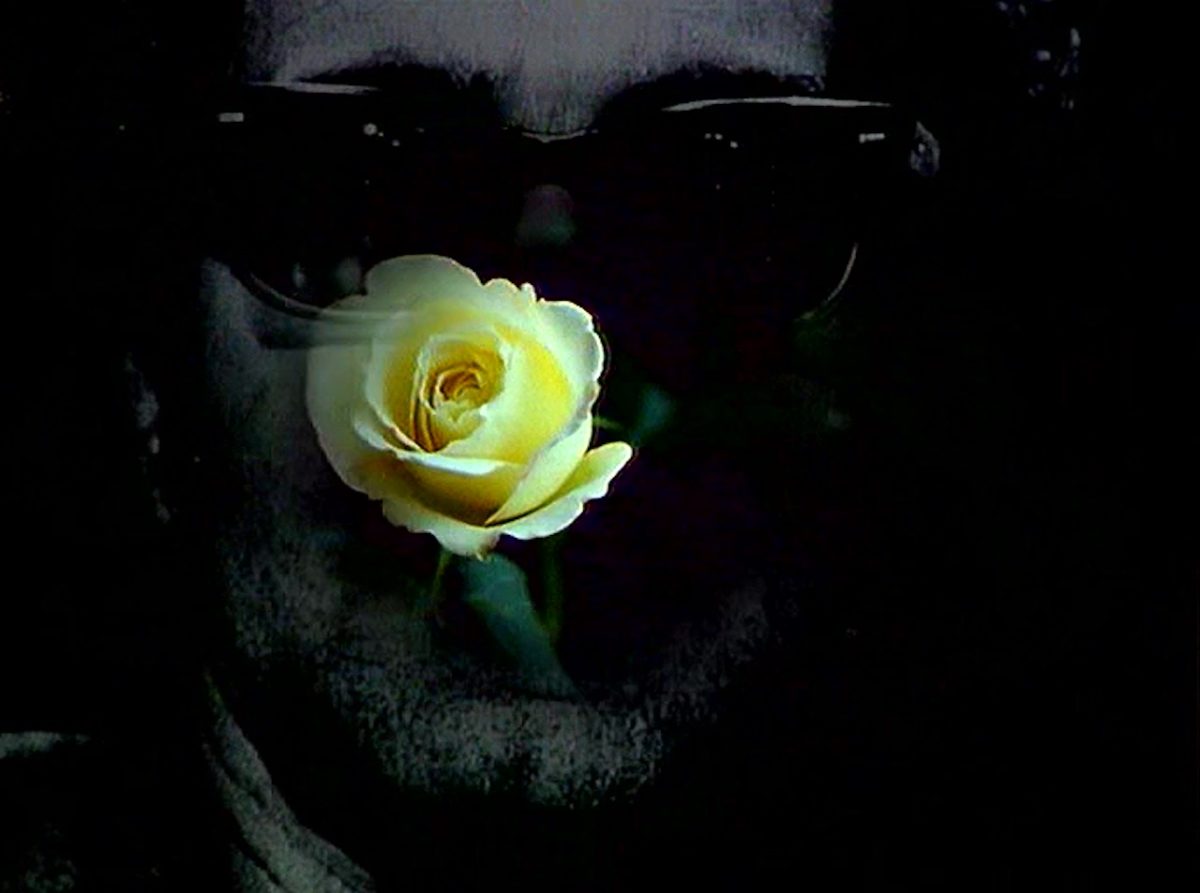
I was that man.”
(Histoire(s) du cinéma)
